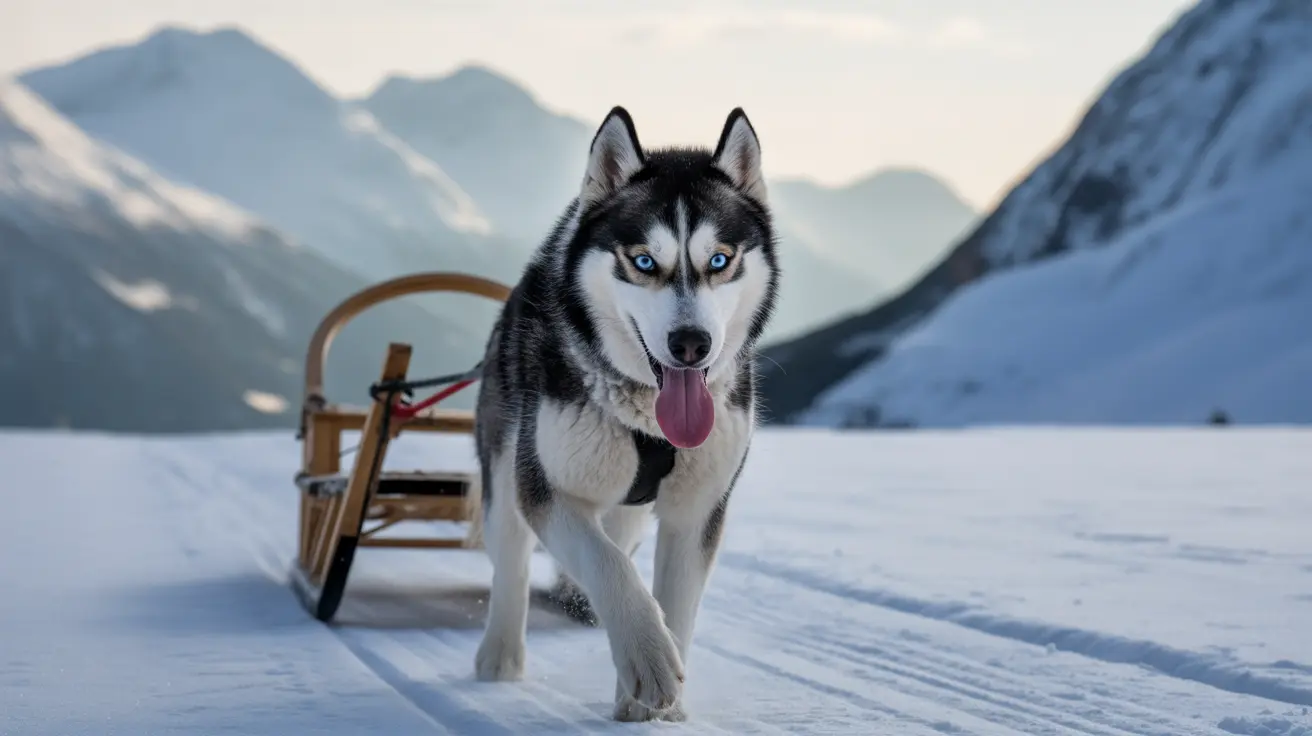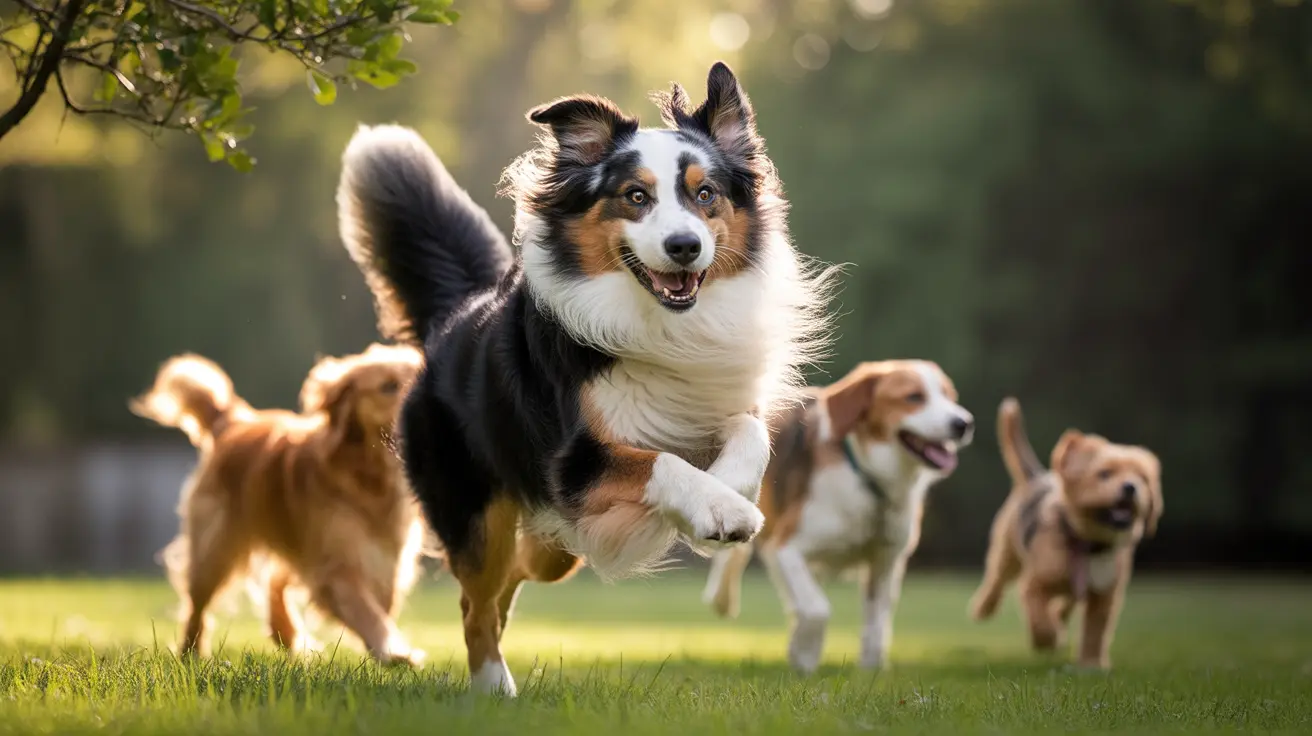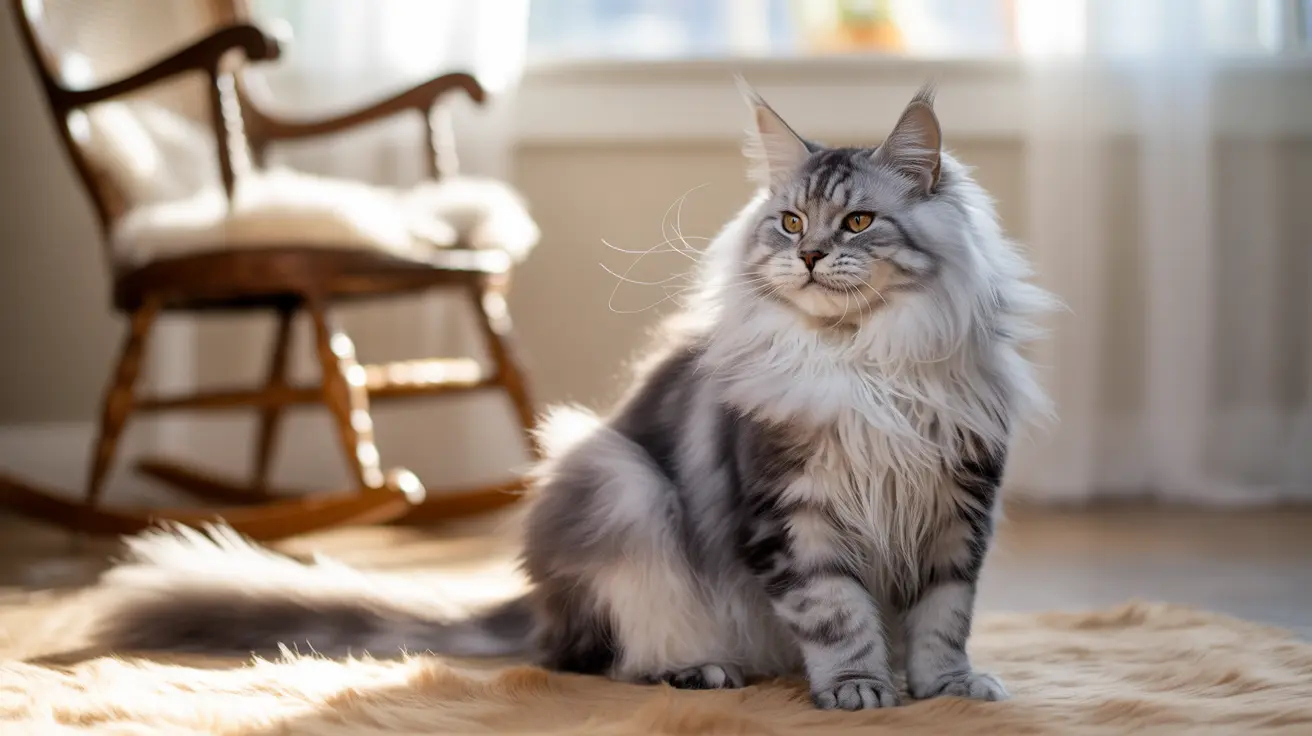Sled Dog Sport Germany: Your Complete Guide to Nordic Sledding Adventures
The thrill of commanding a team of powerful Nordic dogs through snow-covered landscapes is no longer confined to Alaska's wilderness. Sled dog sport Germany has experienced remarkable growth, transforming from a niche winter activity into a passionate pursuit for thousands of outdoor enthusiasts across the country. This ancient form of transportation, deeply rooted in Arctic traditions, has found a vibrant new home among German dog sport enthusiasts who seek the perfect blend of athleticism, teamwork, and connection with their canine companions.
Whether you're drawn to the intense bond between musher and dog team, the physical challenge of navigating winter terrain, or simply the joy of watching Nordic breeds do what they were born to do, sled dog sport in Germany offers something extraordinary. From single-dog adventures to commanding teams of eight or more powerful huskies, this sport provides year-round opportunities for both competitive racing and recreational mushing experiences.
In this comprehensive guide, we'll explore everything you need to know about sled dog sport Germany, from understanding the various competition classes to choosing the right Nordic breed for your sledding journey. You'll discover how German mushers have adapted this Arctic tradition to local conditions, learn about the equipment and training required, and understand why this demanding yet rewarding sport continues to capture the hearts of dog lovers nationwide.
The Rise of Nordic Sled Dog Breeds in Germany
Germany's fascination with sled dog sport has been fueled by the increasing popularity of Nordic breeds such as Siberian Huskies, Alaskan Malamutes, Greenland dogs, and Samoyeds. These magnificent working dogs, originally bred for Arctic conditions, have found devoted homes with German families who appreciate their intelligence, endurance, and pack-oriented nature. The appeal goes far beyond their striking appearance – these breeds represent a living connection to one of humanity's oldest partnerships with working dogs.
The growth in Nordic breed ownership has created a natural pipeline into sled dog sport Germany, as owners quickly discover that these high-energy dogs require intensive exercise and social interaction to thrive. Unlike many companion breeds, Nordic sled dogs are highly active, family-oriented animals that flourish in pack environments and demand appropriate physical outlets to prevent behavioral problems. Traditional walks and backyard play simply aren't sufficient for dogs bred to pull sleds across vast Arctic distances.
This realization has led countless German dog owners to explore sled dog sport as the ideal solution for meeting their pets' needs while embarking on their own adventure. The sport provides the perfect outlet for these breeds' natural instincts, allowing them to work as a team while satisfying their need for strenuous physical activity and mental stimulation.
Understanding the German Sled Dog Sport Organization (AGSD)
The German sled dog sport is professionally organized by the AGSD (Arbeitsgemeinschaft Schlittenhundsport Deutschland), which oversees competitions and establishes standards for the sport throughout the country. This organization plays a crucial role in maintaining the integrity and safety of sled dog competitions while promoting the welfare of the animals involved.
The AGSD recognizes four FCI-approved Nordic sled dog breeds for official competition: Siberian Huskies, Alaskan Malamutes, Samoyeds, and Greenland dogs. Each breed brings unique characteristics to the sport, from the Siberian Husky's legendary endurance and speed to the Malamute's raw power and strength. This breed recognition system ensures that competitions remain fair while celebrating the diverse talents of different Nordic breeds.
Competition categories are carefully structured based on the number and breed of dogs pulling sleds or carts, creating opportunities for mushers with different team sizes and breed preferences. This thoughtful organization allows both newcomers with single dogs and experienced mushers with large teams to find their place in the German sled dog sport community.
Competition Classes and Categories in German Sled Dog Sport
Skandinavier/Skijöring/S-Velo Classes
For those new to sled dog sport Germany or owners of single dogs, the Skandinavier, Skijöring, and S-Velo classes provide the perfect entry point. These categories involve one dog pulling a pulka (a small sled) or assisting a musher on skis or mountain bike. Skijöring, where the dog helps pull a skier, represents one of the most accessible forms of the sport, requiring minimal equipment while delivering maximum excitement.
The S-Velo category adapts the sport for warmer seasons, with dogs pulling mushers on specially designed mountain bikes or scooters. This year-round approach ensures that training and competition can continue regardless of snow conditions, making sled dog sport more practical for German climate variations.
C1 and C2 Classes: Small Team Competitions
The C1 and C2 classes accommodate teams of 2-4 dogs, creating distinct categories based on breed characteristics and team composition. C1 classes primarily feature Siberian Huskies, known for their speed, endurance, and relatively lighter build. These competitions emphasize agility and sustained pace over raw pulling power.
C2 classes are designed for heavier breeds like Alaskan Malamutes and Samoyeds, whose greater size and strength require different racing strategies. Teams in these classes may move at slightly slower speeds but demonstrate impressive power and stamina. Mushers in both C classes often must physically assist their smaller teams, running alongside the sled during starts and uphill sections.
B1 and B2 Classes: Medium Team Competition
With 4-6 dogs, B1 and B2 classes represent a significant step up in complexity and excitement. These medium-sized teams require enhanced discipline and safety precautions due to their increased pulling power and speed capabilities. The musher's role becomes more focused on steering and team management rather than providing physical assistance.
B class competitions demand greater skill in dog training, as larger teams require more sophisticated command structures and coordination. The enhanced power of 4-6 dogs creates thrilling speeds while testing the musher's ability to maintain control and make split-second decisions during competitions.
A and O Classes: Large Team Championships
The A and O classes represent the pinnacle of sled dog sport Germany, featuring teams of 6-8 dogs (A class) or more than 9 dogs (O class). These competitions are typically dominated by Siberian Huskies due to their optimal combination of speed, endurance, and team coordination abilities. The longest teams create spectacular displays of canine athleticism and musher skill.
Large team competition requires extensive experience, substantial financial investment, and sophisticated training programs. Mushers in these classes often dedicate their lives to the sport, maintaining year-round training schedules and managing complex logistics for their extended dog families.
Essential Equipment for German Sled Dog Sport
Success in sled dog sport Germany requires specialized equipment designed to ensure both safety and performance. The racing sled represents the most crucial piece of equipment, typically weighing between 20-30 pounds and constructed from ash wood with leather or nylon lashings. These sleds rest on two runners designed to glide efficiently over snow while providing the musher with precise steering control.
The harness system is equally important, with each dog wearing a specially designed sled dog harness built to handle the extreme pulling forces generated by large breeds under challenging conditions. Unlike regular dog harnesses, sled dog harnesses distribute pressure across the chest and shoulders, allowing dogs to pull with maximum efficiency while minimizing injury risk.
The tugline system connects each dog's harness to a central gangline, with additional necklines maintaining proper positioning within the team. This rigging system must be precisely adjusted for each dog and regularly inspected for wear or damage that could compromise safety during high-speed runs.
Training Nordic Breeds for Sled Dog Sport
Training for sled dog sport Germany begins with developing the fundamental relationship between musher and dogs. Nordic breeds are highly intelligent and pack-oriented, requiring consistent leadership and clear communication from their human partners. The training process emphasizes voice commands, with lead dogs learning to respond to directional cues such as "gee" (right), "haw" (left), and "whoa" (stop).
Physical conditioning forms the cornerstone of sled dog training, with dogs gradually building endurance through progressively longer runs. Training schedules typically involve daily exercise regardless of weather conditions, as Nordic breeds are built to perform in challenging environments. Summer training often involves cart pulling or bike joring to maintain fitness when snow isn't available.
Team dynamics require careful attention, as each dog must learn their specific role within the group. Lead dogs develop decision-making skills and trail awareness, swing dogs provide backup leadership, team dogs focus on steady pulling power, and wheel dogs learn to help steer and brake near the sled.
Health and Nutrition for Sled Dogs
Maintaining optimal health for sled dogs requires specialized nutrition and veterinary care tailored to high-performance athletes. Dogs competing in sled dog sport Germany burn enormous amounts of calories, requiring high-fat, high-protein diets that provide sustained energy for extended periods of intense exercise.
Regular veterinary examinations monitor crucial health indicators including joint condition, heart health, hydration levels, and early signs of exhaustion or injury. Preventive care becomes essential given the physical demands of the sport, with particular attention paid to foot health, as dogs' paws must withstand harsh conditions during training and competition.
Performance monitoring includes maintaining detailed logs of each dog's condition, energy levels, and recovery patterns. This data helps mushers optimize training schedules, identify potential health issues early, and ensure that each team member remains healthy throughout the demanding competitive season.
Adapting Sled Dog Sport to German Climate Conditions
German mushers have successfully adapted traditional Arctic sled dog sport to local climate variations, creating year-round training and competition opportunities. Winter racing takes advantage of Germany's snow season, while summer months feature dryland events using wheeled carts or specialized equipment that allows continued training and competition.
Temperature management becomes crucial during warmer periods, as Nordic breeds are naturally adapted to cold conditions. German mushers employ various cooling strategies, adjust training schedules to cooler parts of the day, and ensure adequate hydration during warm-weather activities.
The adaptation to local conditions has actually enhanced the sport's appeal, making it accessible to more participants while maintaining the essential elements that make sled dog sport so compelling. This flexibility demonstrates the resilience and adaptability of both the Nordic breeds and the dedicated mushers who compete with them.
Getting Started in German Sled Dog Sport
Beginners interested in sled dog sport Germany should start by connecting with local mushing clubs and experienced mentors who can provide guidance and hands-on training opportunities. Many established mushers welcome newcomers and offer apprenticeship programs or training partnerships that accelerate the learning process.
Initial investment can be managed by starting with single-dog activities like skijöring before progressing to larger teams and more expensive equipment. This gradual approach allows newcomers to develop skills, assess their commitment level, and build relationships within the sled dog community.
Participation in local events as a spectator or volunteer provides invaluable learning opportunities and helps newcomers understand the practical aspects of competition, equipment management, and dog care. The German sled dog sport community is known for its welcoming attitude toward beginners who show genuine interest and respect for the sport.
Frequently Asked Questions
- What breeds are officially recognized for sled dog sport Germany competitions?
The AGSD recognizes four FCI-approved Nordic breeds: Siberian Huskies, Alaskan Malamutes, Samoyeds, and Greenland dogs. Each breed brings unique characteristics to competition, with Siberian Huskies dominating speed events and Malamutes excelling in power-focused categories.
- How do I start sled dog sport with just one dog?
Begin with Skandinavier, Skijöring, or S-Velo classes designed for single dogs. These entry-level categories involve your dog pulling a small pulka or assisting you while skiing or mountain biking, requiring minimal equipment while providing an excellent introduction to the sport.
- What's the difference between C1 and C2 competition classes?
C1 classes primarily feature lighter, speed-focused breeds like Siberian Huskies in 2-4 dog teams, while C2 classes are designed for heavier breeds like Malamutes and Samoyeds. The distinction ensures fair competition based on breed characteristics and team composition.
- Can I participate in sled dog sport during German summers?
Yes, German sled dog sport includes year-round activities. Summer competitions feature dryland events with wheeled carts or S-Velo categories where dogs pull mushers on mountain bikes or scooters, ensuring training and competition continue regardless of snow conditions.
- How much physical assistance do mushers provide to their dog teams?
Musher assistance varies by team size. In smaller classes (C1, C2), mushers often run alongside the sled during starts and uphill sections. Larger teams (B1, B2, A, O classes) require less physical assistance, with mushers focusing more on steering and team management.
- What safety precautions are required for larger dog teams?
Larger teams require enhanced safety measures due to increased speed and pulling power. This includes specialized braking systems, proper harness and rigging inspection, advanced training in team control, and comprehensive understanding of emergency procedures.
- How do I find training opportunities and mentors in Germany?
Connect with local AGSD-affiliated clubs, attend sled dog sport events as a spectator or volunteer, and reach out to experienced mushers who often welcome newcomers. Many clubs offer beginner programs and training partnerships to help newcomers develop proper techniques.
Conclusion
Sled dog sport Germany represents far more than a competitive activity – it's a lifestyle that celebrates the extraordinary bond between humans and their Nordic canine partners. From the single-dog adventures of Skijöring to the thunderous power of eight-dog teams racing across snow-covered terrain, this sport offers something for every level of commitment and experience. The careful organization by AGSD ensures that participants can find their perfect niche while maintaining the highest standards of animal welfare and competition integrity.
As interest in Nordic breeds continues to grow throughout Germany, sled dog sport provides the ideal outlet for these magnificent dogs to express their natural abilities while offering their human partners an unmatched adventure experience. Whether you're drawn by the competitive aspects, the deep partnership with working dogs, or simply the joy of experiencing winter landscapes in their most traditional form, sled dog sport Germany opens the door to a community of passionate individuals united by their love for these remarkable animals and the timeless tradition of mushing.






